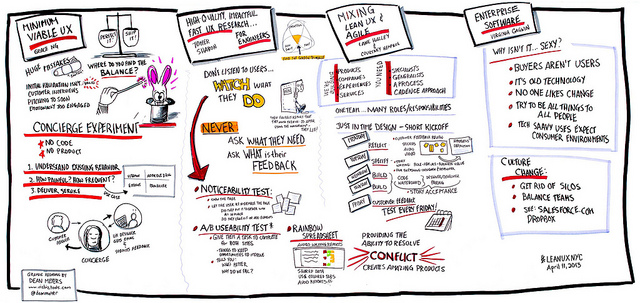Unpacking the Critical Differences That Drive Product Success
In today’s digital battleground, user experience (UX) isn’t just a buzzword—it’s the make-or-break factor separating industry leaders from forgotten failures.
While “UX” is often used as a blanket term, it houses two distinct, equally vital roles: UX Researcher and UX Designer. Though their work is deeply interconnected, conflating these roles is like mistaking a cartographer for an architect. One charts the terrain; the other builds the structures. Let’s dissect their differences, synergies, and why both are indispensable.
The Core Divide: Mission & Responsibilities
UX Researcher: The Voice of the User
UX Researchers are behavioral scientists. Their mission: uncover the “why” behind user actions. They translate human complexities into actionable insights.
Key Activities:
Conducting qualitative usability tests (e.g., observing users navigate a prototype).
Field studies and contextual inquiries (studying users in their natural habitat).
Surveys and quantitative data analysis (e.g., using tools like Qualtrics).
Creating user personas and journey maps (synthesizing research into archetypes).
Tools of the Trade:
Research Platforms: UserTesting, Lookback, Dovetail.
Analytics Tools: Hotjar, Google Analytics, Maze.
Synthesis: Miro for affinity mapping, Notion for repository management.
Frameworks & Methodologies:
Jobs to Be Done (JTBD): Identifying core user “jobs” (e.g., “I need to share files securely”).
Contextual Inquiry: Immersive observation (NN/g recommends this for complex workflows).
Diary Studies: Longitudinal tracking of user behavior.
Real-World Impact: At Airbnb, researchers discovered hosts felt anxious about damage. This led to the “Host Guarantee” feature—reducing friction and boosting trust (Source: Airbnb Design).
UX Designer: The Architect of Experience
UX Designers are solution engineers. They transform research insights into intuitive, visually coherent interfaces.
Key Activities:
Wireframing and interactive prototyping (e.g., using Figma).
Crafting user flows and information architecture.
Visual design (typography, color systems, UI components).
Usability testing for design validation (collaborating with researchers).
Tools of the Trade:
Prototyping: Figma, Sketch, Adobe XD.
Visual Design: Photoshop, Illustrator, Framer.
Collaboration: InVision, Zeplin.
Frameworks & Methodologies:
Atomic Design (Brad Frost): Building UIs from modular components.
Design Sprints (GV): Rapid prototyping in 5 days.
Double Diamond: Divergent/convergent thinking for problem-solving.
Real-World Impact: Spotify’s “Discover Weekly” leveraged designers to translate data (from researchers) into a personalized UI, driving 40M+ user engagements weekly (Source: Spotify Case Study).
Skills Showdown: Where Their Talents Diverge
(Data sourced from industry studies)
| Skill | UX Researcher | UX Designer |
|---|---|---|
| Most Desired Skill | Data Analysis (72%) | Visual Design (68%) |
| Top Skills | Research, Writing, Public Speaking | Prototyping, Visual Design, Research |
| Key Differentiators | Statistical literacy, Ethnographic interviewing | Interaction design, UI aesthetics, Motion design |
Why It Matters: Researchers thrive in ambiguity (e.g., interpreting open-ended interview data). Designers excel in structured creativity (e.g., translating a user flow into a pixel-perfect layout).
Educational Backgrounds: Paths to Mastery
UX Researchers: Often hail from social sciences (psychology, anthropology) or humanities. Degrees emphasize critical analysis, ethics, and human behavior.
UX Designers: Typically trained in visual disciplines (graphic design, digital media) or product design. Education focuses on form, function, and technical execution.
Industry Shift: Bootcamps like General Assembly and CareerFoundry now bridge gaps, teaching designers research basics and researchers prototyping skills.
Collaboration in Action: The Yin and Yang of Product Development
When researchers and designers sync, magic happens:
Research Informs Design:
Researchers identify a user pain point (e.g., “checkout takes too long”).
Designers prototype solutions (e.g., a one-click purchase flow).
Design Validates Research:
Designers create an A/B test (e.g., Button A vs. Button B).
Researchers analyze results to guide iterations.
Case Study: At Dropbox, researcher-design duos reduced sign-up friction by 10% by pairing field study insights with iterative prototyping (Source: Dropbox Design).
Tools & Tactics: How They Overlap and Diverge
Shared Toolkit:
Figma: Researchers use it for usability test prototypes; designers for high-fidelity mockups.
Miro: Collaborative synthesis (researchers) and wireframing (designers).
User Interviews: Both conduct sessions, but researchers focus on why, designers on how.
Role-Specific Arsenal:
Researchers: SQL for data mining, R/Python for statistical analysis.
Designers: Principle for animations, Webflow for no-code development.
Career Paths: Where Can These Roles Take You?
UX Researchers → Lead Researchers, UX Strategists, Product Managers.
UX Designers → Design Directors, Product Owners, UI Specialists.
Hybrid Roles Emerge: “UX Unicorns” (researcher-designers) thrive in startups, while larger firms favor specialization.
Key Takeaways: Why Both Roles Are Non-Negotiable
Researchers prevent costly missteps: 80% of products fail due to poor user research (Forrester).
Designers drive engagement: Good UI can boost conversion rates by 200% (NNGroup).
Symbiosis beats silos: Teams with dedicated researchers AND designers launch products 50% faster (McKinsey).
Conclusion: Building Bridges, Not Silos
UX Researchers and Designers aren’t rivals—they’re co-pilots navigating the same destination: user delight. Researchers illuminate the path with data; designers pave it with ingenuity. In an era where user expectations skyrocket daily, investing in both isn’t optional—it’s existential.
“Research without design is a map without a destination. Design without research is a ship without a compass.”
Further Reading:
Tools Deep Dive:
Research: Dovetail, UserTesting
The image belongs to NetSolutions


